Canine skin cancer, with tumors that affect the skin or the tissues under the skin, is the most common kind of cancer seen in dogs.
If your dog has anything new on her skin, you need to pay attention to it. Skin cancer in dogs is really hard to distinguish from other lumps and bumps that are not harmful.
If a bump is cancerous, without looking under the microscope at a tissue sample, even a veterinarian may have some trouble diagnosing it.
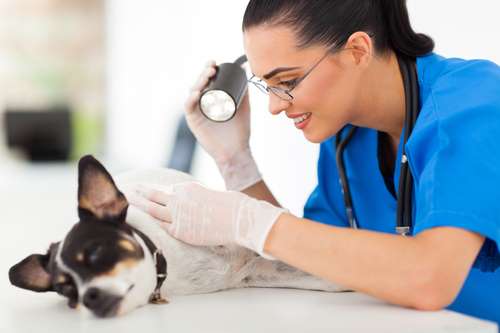
Perhaps the reason that skin cancer in dogs is the kind of cancer most often diagnosed, is that we can see changes on the skin of our dogs. Especially when we brush or groom them.
On the other hand, if there is a problem inside your dog’s body, she can’t tell you what she’s feeling like. So it can go un-noticed for quite a while.
This article will discuss:
- Dog Breeds at Risk for Skin Cancer
- The 3 Most Common Types of Dog Skin Cancer
- Dog Sunburn and Skin Cancer
- How is Skin Cancer in Dogs Diagnosed?
- Warning Signs of Dog Skin Cancer
- Canine Skin Cancer Treatment
- Cut Down on Sun Exposure
- How to Help your Dog
These Dog Breeds are Most at Risk for Skin Cancer
Skin cancer is seen in some dog breeds more than others. In addition to heredity, we know that exposure to chemicals, sun damage and viruses can also play a part in whether your dog gets skin cancer or not.
The breeds that have a genetic risk for cancer include:
- Boston terrier
- Rottweiler
- Bernese mountain dog
- Boxers
- Beagles
- Bulldogs
- Labrador retrievers
- Pugs
- Rhodesian ridgebacks
- Miniature schnauzers
- Terriers
- Mixed breeds
All dogs can get skin cancer. Even if a dog has long hair that protects him from the sun, he can still get it.
3 Most Common Types of Dog Skin Cancer
There are 3 common types of skin cancer that we see in dogs.
Mast cell tumors in dogs

Mast cell tumors are the most common skin cancer tumors that we see in dogs. 10-20% of all canine skin cancers are mast cell tumors.
They are somehow linked allergic reactions, and they produce histamine, which we know is produced as a reaction to an allergen.
Because these tumors have an odd connection to allergies, if your dog has allergies, you should be especially alert to changes in his body.
Another clue that you should pay attention is that about 25% of dogs with mast cell tumors also develop an ulcer. This is also caused by the release of histamine from the tumor.
Mast cell tumors cause itchiness and irritation. They are seen most often in older Weimaraners who are 7 years old or older. They are seen most often in mixed breeds.
The tumors can appear anywhere on the skin, but also inside your dog’s body on his internal organs. Most commonly, you may see them on your dog’s legs, chest or tummy. But sometimes they are found on a dog’s head or neck.
Mast cells are strange looking. They have a central lump or tumor that is surrounded by a circle of smaller mast cells. But they can also look like a swelling under the skin, a fatty cyst, a pimple or rash or a wart.
If mast cell tumors receive treatment, they can be put to rest, but untreated mast cell tumors are fatal.
Malignant Canine Melanoma
The second common kind of canine skin cancer is malignant canine melanoma.
Melanoma is not always cancerous. Canine melanoma, or melanocytoma, can also be benign. In fact, most often it is benign, or not cancer.
Canine melanomas are seen most often in middle-aged or older dogs, and they usually develop on the head or forelegs of a dog. Sometimes they are seen on the pads of the dog’s feet, in the nail beds, on the lips or behind and inside the eye.
These tumors often develop in the nail bed of older dogs. Sometimes the area will fester and the nail will fall off. In this case, the vet may do a biopsy, taking a sample (including bone) to determine if it is cancer.
Understandably, the place where melanoma causes the most problems is in a dog’s mouth. If your dog has melanoma in his mouth, you may notice that he has very bad breath, trouble chewing his food, and has food fall out of his mouth. Often we see bleeding in a dog’s mouth, swelling on one side of his face and sometimes unexplained weight loss.
When a dog has melanoma, the treatment used most often is surgery with radiation.
Canine melanomas grow quickly, and they can spread to other organs in the body. It is important to get medical treatment early for this kind of cancer.
Squamous Cell Carcinoma in Dogs
Squamous cell carcinomas, the third type, are also found commonly in dogs. Older dogs frequently have these tumors develop on their skin on the head, lower legs, tummy or rear.
Most squamous cell carcinomas are firm and raised. Or they could be patches of ulcers and lumps. On occasion, a squamous cell carcinoma looks like a wart.
This kind of dog cancer can be caused by excessive sun exposure, as when dogs lie on their backs in the sun. In addition, there is some evidence that exposure to the papilloma virus can also cause this type of cancer.
However, you do have some warning before squamous cell carcinoma develops. The skin becomes thick and discolored, even before you see any sign of tumors. This is the time to show it to your vet.
Dog Sunburn and Canine Skin Cancer
Just like with people, dogs can get sunburned, and if the sun damage is severe, your dog will be more likely to have skin cancer.
Dogs that have light colored hair, a thin coat or those that are hairless, are the most vulnerable to sun exposure.
In addition, if your Weimaraner has thinning hair because of allergies or other irritations, he can get sunburned, with skin damage.
Dogs who live in the southern U.S., in Arizona, southern California, Texas, Nevada or New Mexico, are more likely to get sunburned because of the intense rays of the sun. And because they are able to be outside for most of the year.
How is Skin Cancer Diagnosed in Dogs?
Your dog’s skin has a number of layers, and each layer can support the growth of cancerous tumors.
Dogs who have skin allergies or food allergies often bite and scratch, leaving areas that have no hair and the skin is irritated, red, swollen and itchy. And, just like other dogs, they sometimes have hot spots.
Skin areas that are irritated need to be watched carefully.
It is important to note that not every lump or tumor is cancerous. This makes diagnosis of cancer in your dog somewhat difficult.
If your dog has a suspicious lump, your vet may perform a fine needle aspiration of the cells (extracting cells with a thin needle) or the vet may do a biopsy. With a biopsy, the vet cuts out a small amount of tissue that will be examined under a microscope.
Warning Signs of Dog Skin Cancer
Of course you should pay attention to any lump that doesn’t go away in a few days. Bug bites and simple injuries to the skin will go away on their own within a couple of days.
As dogs get older, the risks for skin cancer do increase. So, even though most growths or bumps on your dog’s skin are probably benign (not cancerous), do pay attention to each one that you find.
If you see any of these symptoms, it is probably time to see your vet:
- Sores that do not heal or an ulcer that doesn’t heal
- Swelling that continues to get larger
- Lump or bump that does not go away in a few days
- Weight loss, with no obvious reason
- Lump that has an odd look because it has an irregular shape of a strange color
- Rash that does not go away
- Patch of skin with an off color and no hair
While tumors in a dog can be benign or malignant, it is difficult to tell the difference when you just look at them.
Most often skin cancer is removed and forgotten. However, sometimes it indicates that there is more going on inside your dog’s body, an internal cancer that is more serious.
How is Canine Skin Cancer Treated?
Treatment for cancer in dogs is expensive and it will probably require frequent visits to your vet.
Decisions about care will depend on the age of your dog, how long your dog is expected to live, and whether he is expected to have a good quality of life.
Unfortunately you also have to consider the expenses in time and money that cancer treatment will require. Make sure you discuss this with your vet, as cancer treatment can be very expensive.
Treatment for skin cancer depends largely on the kind of cancer and where it is located on your dog.
Surgery
Surgery is usually your first choice. In many cases, simply removing the cancer is all that is needed. Especially if you discover the surgery in an early stage, surgery is quite effective.
Chemotherapy
Chemotherapy is a combination of very powerful medicines or drugs that are used to kill the offending cancer cells.
Because chemotherapy also kills healthy cells in your dog’s body, your dog can become quite ill with difficult side effects.
Vets often order chemotherapy, in addition to surgery or radiation therapy.
Radiation
Radiation is often used for mast cell tumors in addition to surgery. Mast cells respond well to radiation therapy if they are treated early.
Cut Down on Sun Exposure
Of course, if your dog has skin cancer, your vet will need to be involved in a big way. Whether the vet decides on using surgery, radiation or chemotherapy to treat your dog, this is not something that you can handle by yourself.
But there are things that you can do to help your dog. Long before you have a suspicion of cancer, you can prevent excessive sun exposure to your dog.
This does not mean that you have to keep your dog cooped up in the house all the time. She can come outside with you, and there are some simple things that you can do to make sure that she doesn’t get too much sun.
A dog T-shirt
Just like you cover up when you are getting too much sun at the beach, your dog can wear a t-shirt to cut down on the sun’s rays. This shirt has a Hawaiian look, but you can get many colors and designs.
Canopy over a raised bed
This bed has mesh to allow air flow, even under your pet. The canopy overhead provides shelter from the sun. Dogs naturally find shade when they are hot, and this combination lets you keep your dog outside with you for long periods of time.
Pop-up pool and canopy
If you go to the lake or beach where dogs are permitted (or even in your back yard), your dog can lounge in the shade of this canopy, while lying in some cool water. I like the fact that this is open on one side, allowing some cool breeze inside.
The canopy is quite portable. It folds and then pops up into place when you need it.
Supplements can Help
If your dog has been diagnosed with skin cancer (or another kind), there are some things that you can do to help your dog.
Keep in mind that, if your dog has surgery, radiation or chemotherapy, her immune system will be weakened. One way that you can help your dog is to strengthen her immune system to fight both the cancer and the side effects of the treatments.
- Immune support supplement – This one seems like a treat to dogs. The important part is to make sure that your dog is getting plenty of antioxidants to support his immune system.
- Cancer support supplement – Created specifically for dogs with cancer, a cancer support supplement will also help address pain and symptoms, aid immunity, and it will help get rid of toxins from cancer treatments.
Because Weimaraners can get several types of cancer, it’s wise to examine your dog regularly, to make sure she hasn’t developed any little bumps, lumps or rashes.
And, if you do find something, do take her to the vet. Early treatment will always give you the best result!
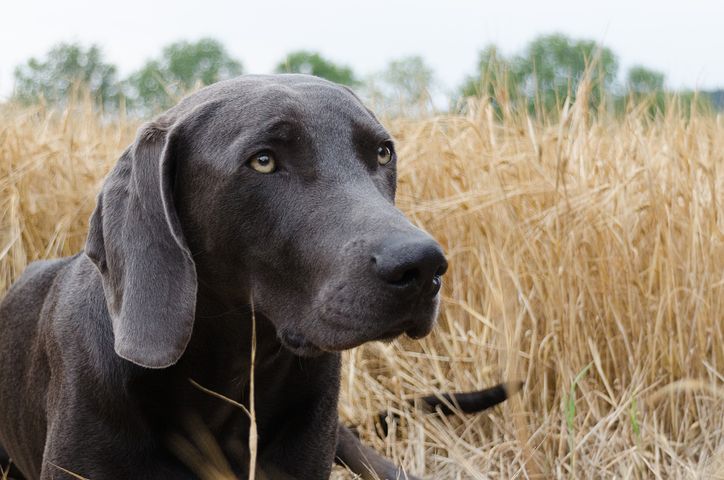


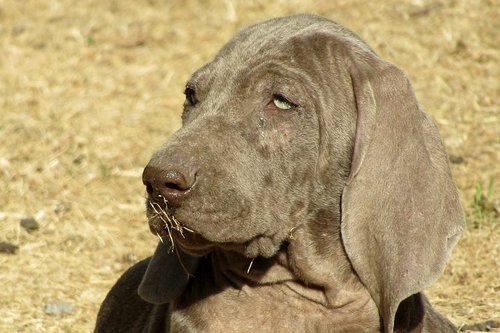
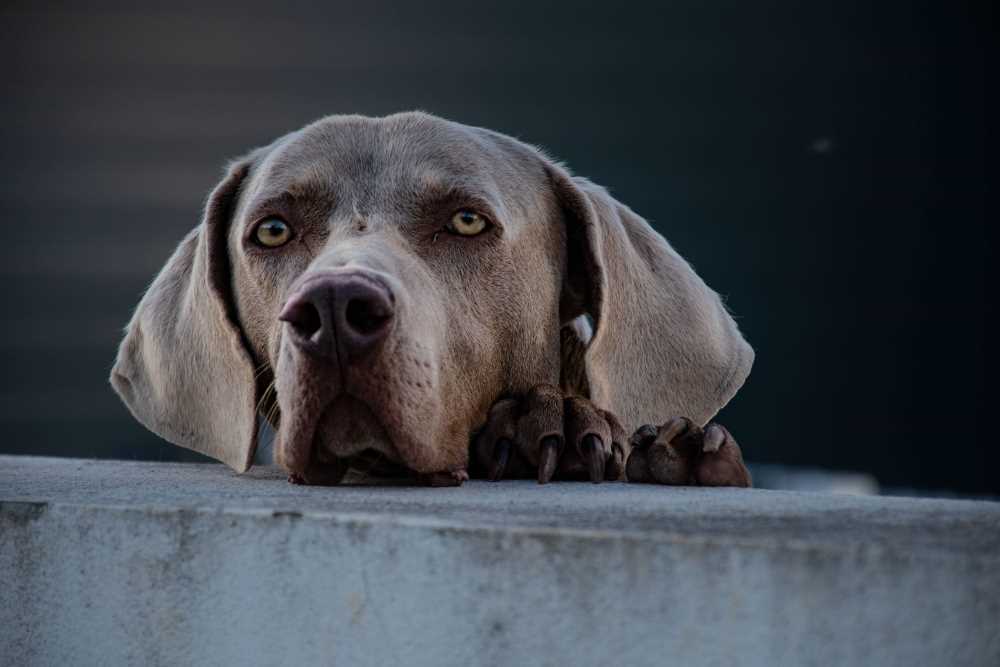
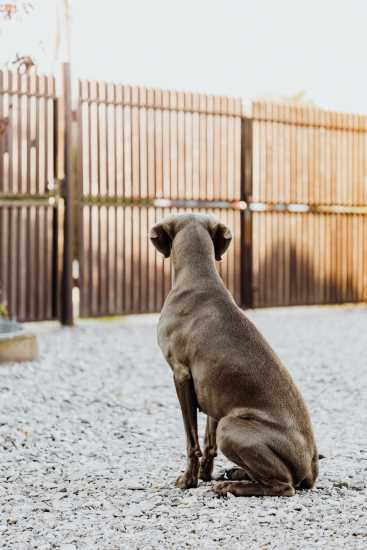
Leave a Reply